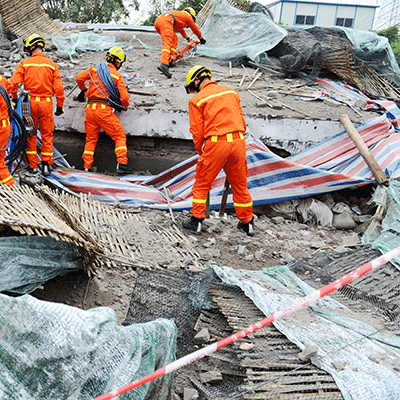Natural disasters strike every year and can cause significant damage to communities. As a result, emergency services personnel have to be prepared for these situations to respond quickly and effectively. When local authorities are unprepared for a disaster, the situation can swiftly turn into a public health emergency. To achieve this goal, here are some tips that organizations should consider to enhance their EMS natural disaster response.
Increase and Improve Training for Disaster Preparedness
In order to respond effectively, EMS personnel (emergency medical service) need to be trained and ready. Training should be ongoing, specific to your area, and realistic. It should include all stakeholders so they can work as a team. The training should also focus on collaboration, teamwork, and providing emergency care, as well as mental health support. Response capabilities should be tested and regularly re-assessed to keep emergency preparedness up-to-date.
Effective incident management should include a response plan for EMS providers to respond to all possible natural disasters that a given area can experience, while also including a plan for increasing surge capacity at local medical centers if a natural disaster is also a mass casualty incident. Disasters can immediately overwhelm medical facilities and cause a reduction in the quality of patient care.
Acquire the Necessary Equipment
First responders and paramedics on the front lines of a natural disaster need the proper equipment to properly triage patients and provide adequate prehospital medical care to those patients until they can be transported to a functioning medical facility.
-
- Access equipment in a way that allows you to provide healthcare in disaster situations.
- Protect the equipment from damage.
- Store the equipment safely so that it doesn’t get damaged or lost during transport or storage periods.
- Transport the equipment safely so that it arrives at its destination safely and on time for medical response.
Establish Relationships With Community Members and Organizations
The best natural disaster response is community-led. Local emergency response teams are known as Community Emergency Response Teams (CERT). It’s essential to establish relationships with community members and organizations before the disaster so that you can work together during and after a crisis. Community disaster response teams can help with:
-
- Information and support with emergency responders
- Supplies and resources
- Mobilizing additional volunteers to assist in response efforts
- Fundraising, donations, and communication
Communication, Information Sharing and Collaboration Between Agencies
Effective communication is essential to effective disaster response. This means that agencies need to be able to communicate with each other in a timely manner, share information about their responses and evolving needs (including their own resources), and collaborate when possible.
All of the agencies involved must have access to the same information—the more they have access to it, the better prepared they can be for an emergency situation. Agencies need access not only because it helps them respond effectively but also because it shows stakeholders that you are working together as a team on this issue or event.
This includes local emergency medical technicians (EMT), law enforcement and other public safety organizations (such as HAZMAT), state emergency management entities, and federal agencies such as The Department of Homeland Security and the Federal Emergency Management Agency (FEMA).
-
- When an EMS system is prepared for a natural disaster, they are more capable of effective response. This is because there is less wasted time and effort, and everyone knows what to expect.
- The public is more likely to trust the government in times of crisis if it has demonstrated an ability to lead effectively during previous disasters.
- Training is essential for any kind of disaster response; it enables personnel to be ready when they need it most. Without training, responders may not know what resources are available or how best to use them.
The federal government uses the National Incident Management System (NIMS) to coordinate disaster management and response in the event of a natural disaster, national disaster, or terrorist attack.
Natural Disasters Are Inevitable
With the right training and preparation, emergency services can better respond to natural disasters. That’s why it’s so important for agencies to invest in their staff members and equipment. And, as a society, we need to do more than just respond—we need to prepare for the next disaster. Penn Care is the ideal place to find EMS response and critical care resources and equipment. Improve your EMS natural disaster response with medical supplies from Penn Care.



